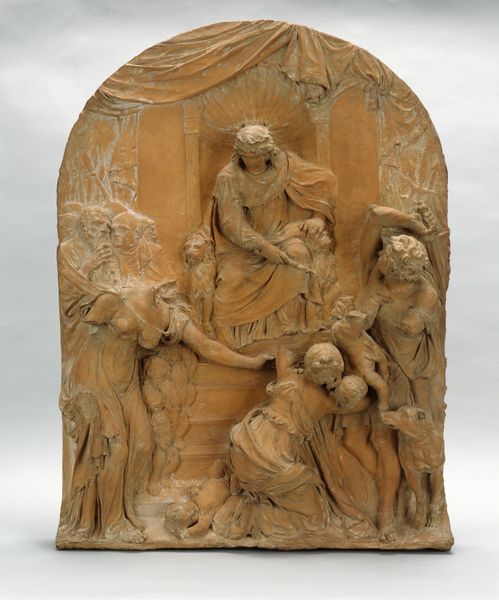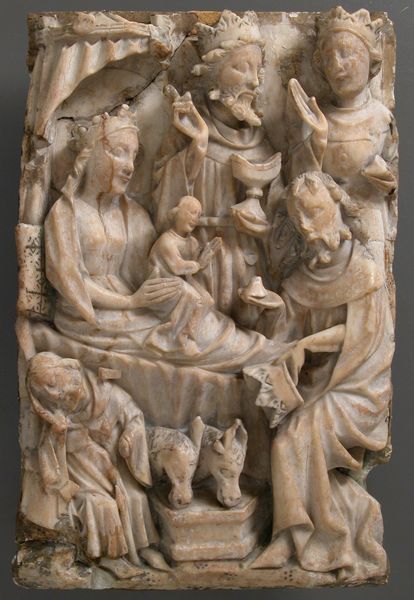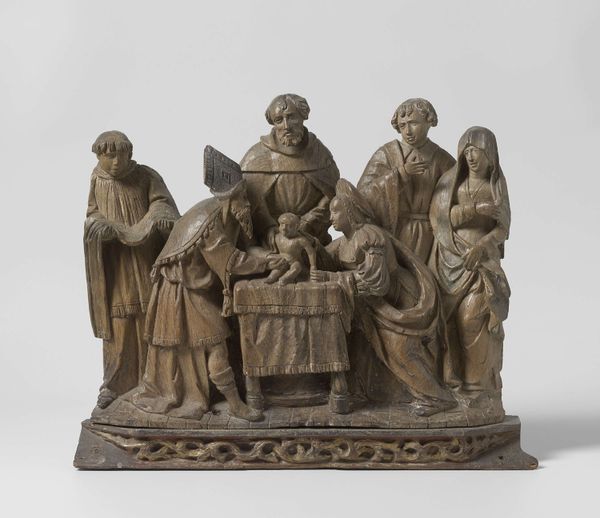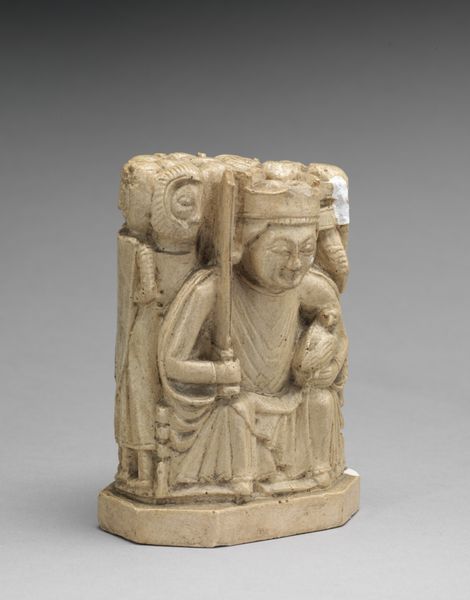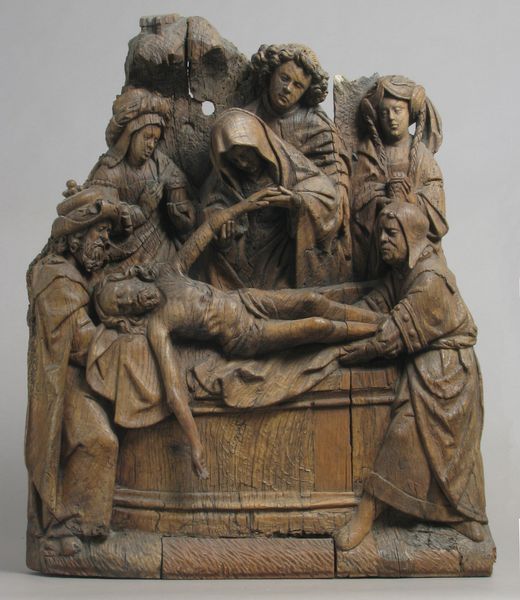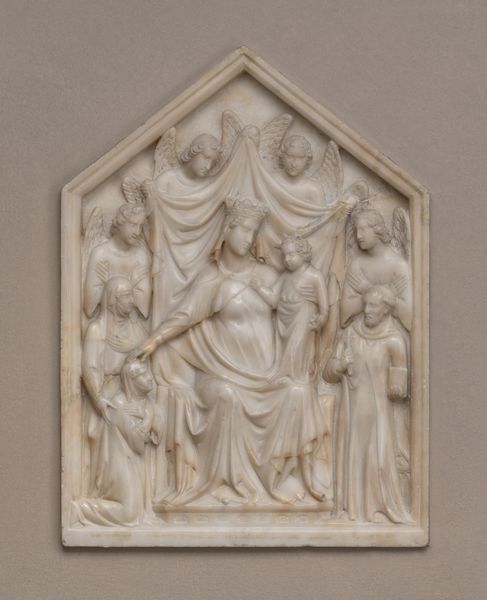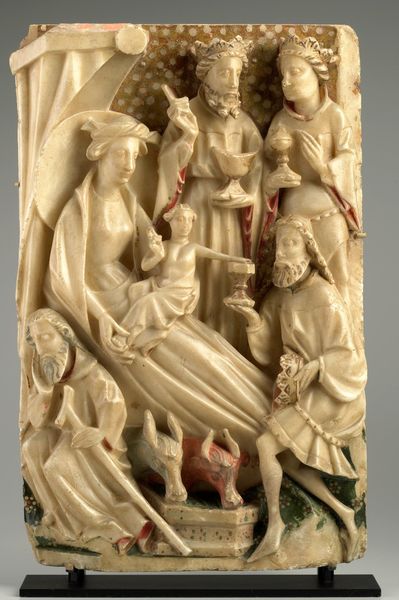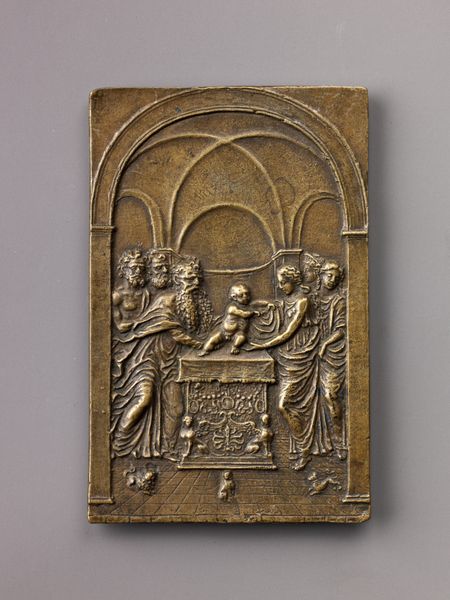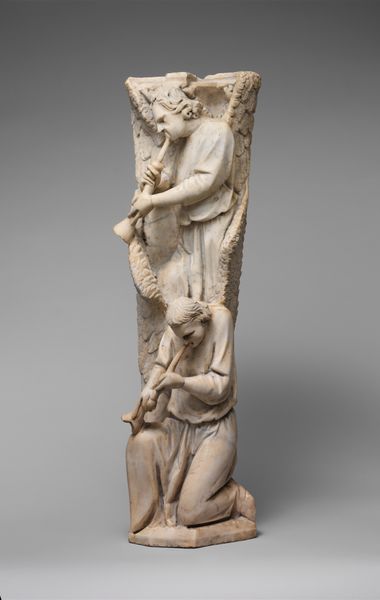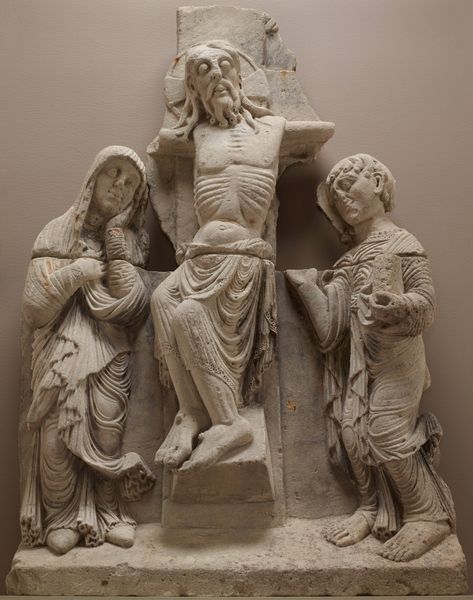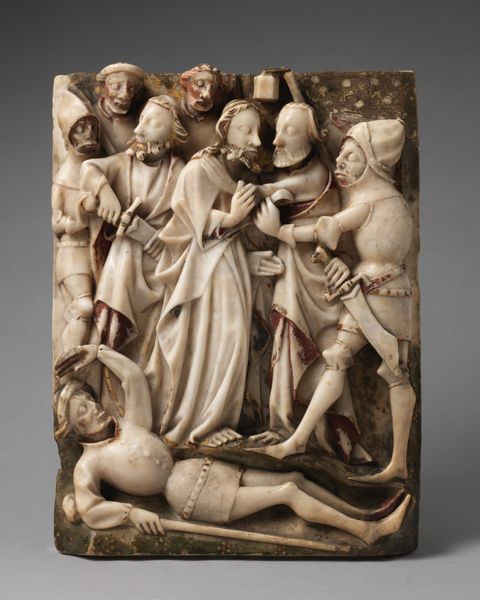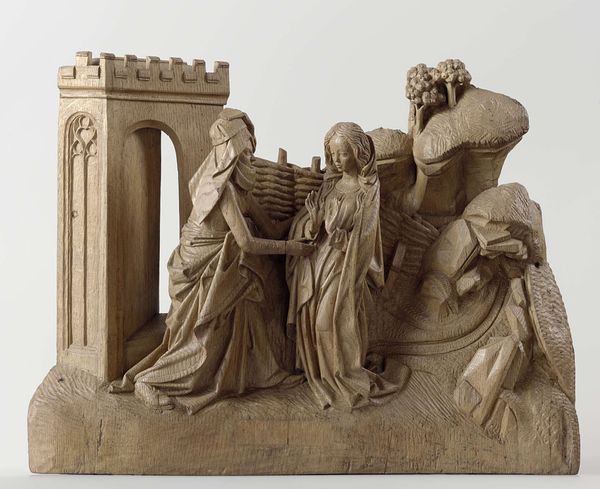
carving, relief, sculpture, marble
#
portrait
#
medieval
#
carving
#
stone
#
sculpture
#
relief
#
figuration
#
sculpture
#
history-painting
#
charcoal
#
marble
#
medieval-art
#
virgin-mary
#
christ
Dimensions: Overall: 13 1/2 x 9 3/8 in. (34.3 x 23.8 cm); 12.5 lbs (5.7 kg)
Copyright: Public Domain
Curator: The profound stillness emanating from this 15th-century alabaster relief, titled "The Entombment," attributed to the School of Nottingham, is quite striking. Editor: It does evoke a heavy silence, a sense of suspended grief. The vertical layering of the figures, their contained expressions... there's a deep sadness rendered with almost geometric precision. Curator: The composition cleverly divides the emotional landscape. Notice how the body of Christ is horizontally supported and displayed, almost as a second alter, drawing our eyes across. Then our gaze drifts down to the seated figure in the lower level, seemingly in mournful contemplation. Editor: Absolutely, that division underscores the isolation each character experiences in their grief. It's not just about the death; it’s about the social and spiritual implications of loss, the patriarchal expectations around mourning, particularly for women like the Virgin Mary present here. What sociopolitical commentary might we extract from these figures' robes of the same texture? Is it in part social commentary? Curator: Considering its time and location of production, the consistent robe texture hints to shared ideals, a sense of collectivism under Christian authority, or that everyone grieves despite class. As marble reliefs, Nottingham alabasters held a central place in the devotional life of late medieval England and the visual politics of the church. Carvings like "The Entombment" would have likely been part of a larger altarpiece. The production of alabaster was of economic and societal import within England during the medieval era. Editor: Indeed. So much here is visually reinforcing prescribed roles and narratives. The art serving not only as a historical documentation, but in that way, reinforcing of the very power dynamics prevalent at the time, the church wielding significant influence in shaping those narratives. But consider, also, the radical empathy embedded in depicting human suffering with such palpable weight, regardless of those roles. Curator: A good reminder that art can reinforce AND challenge societal norms, depending on one's perspective and what questions one brings to it. Editor: True. Even in silence, or perhaps because of it, the carving compels conversation.
Comments
No comments
Be the first to comment and join the conversation on the ultimate creative platform.

